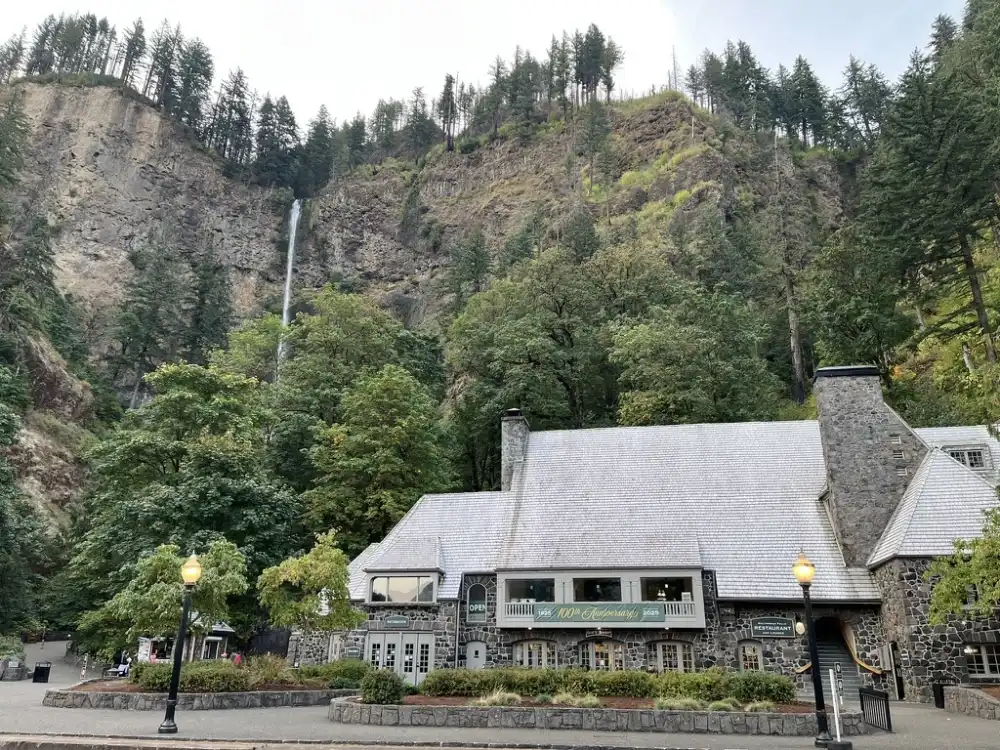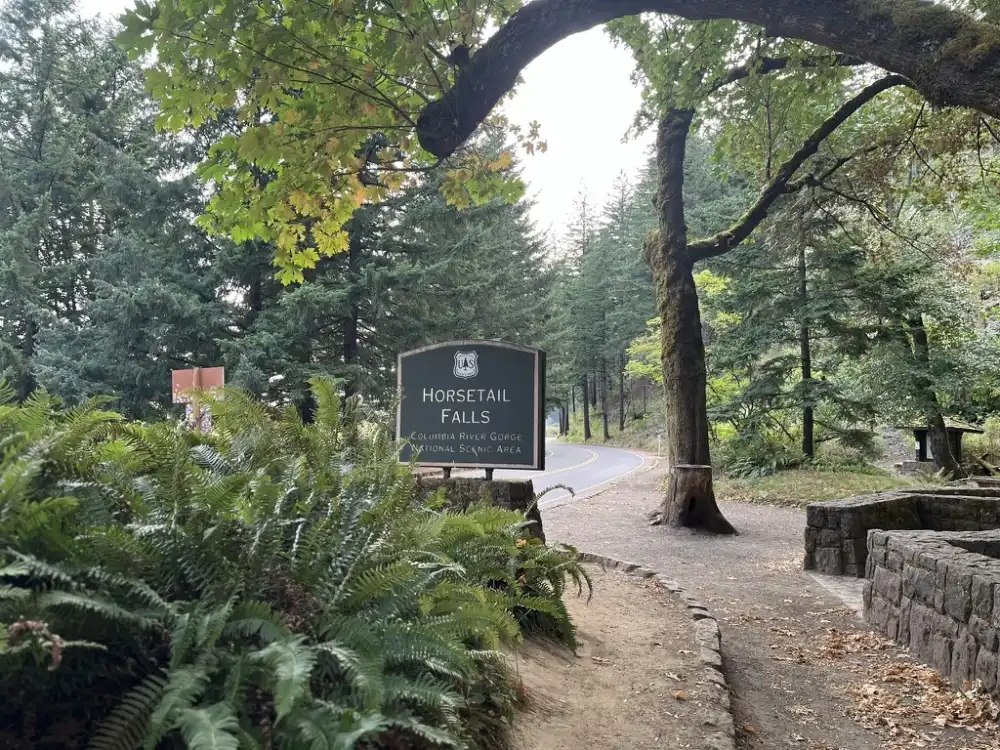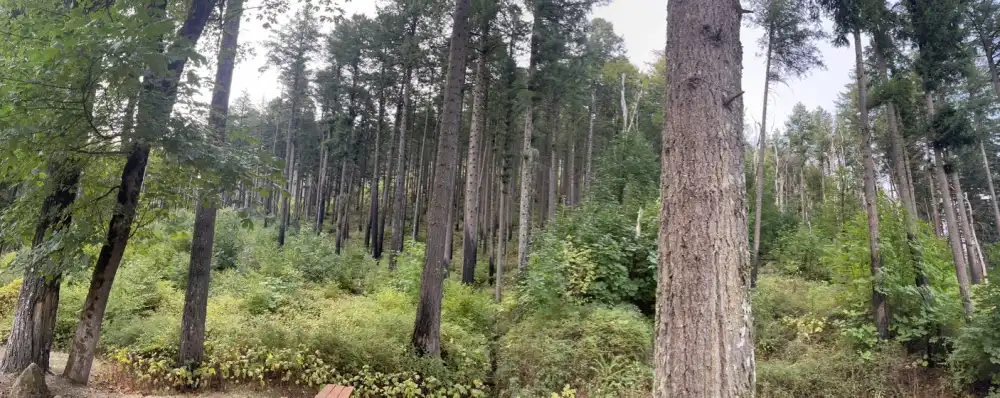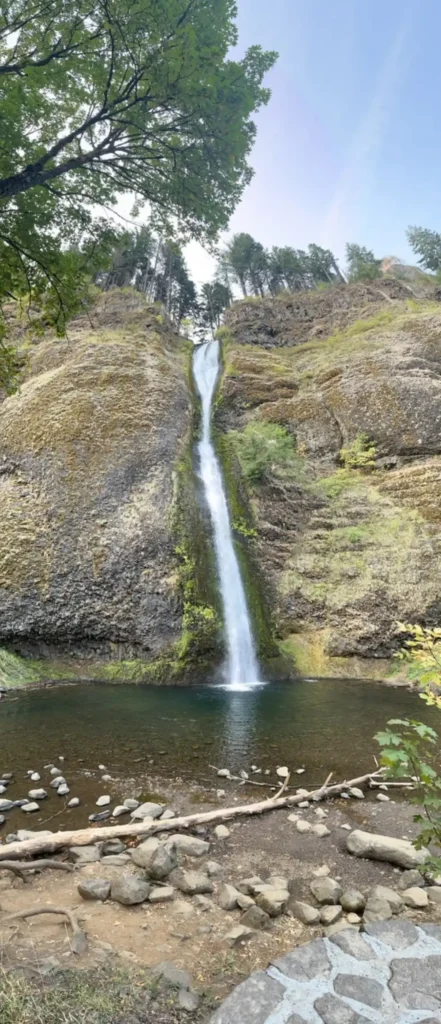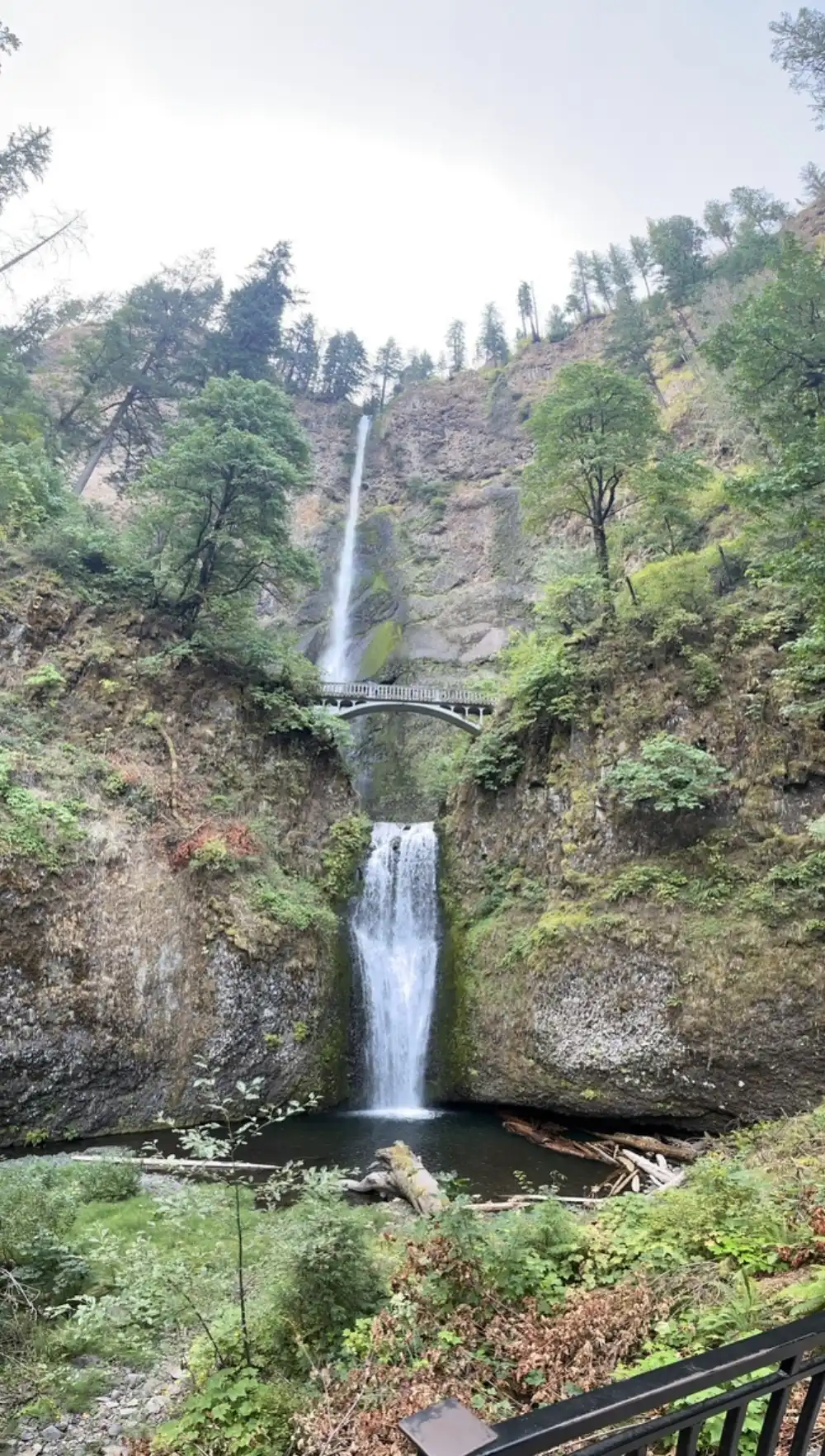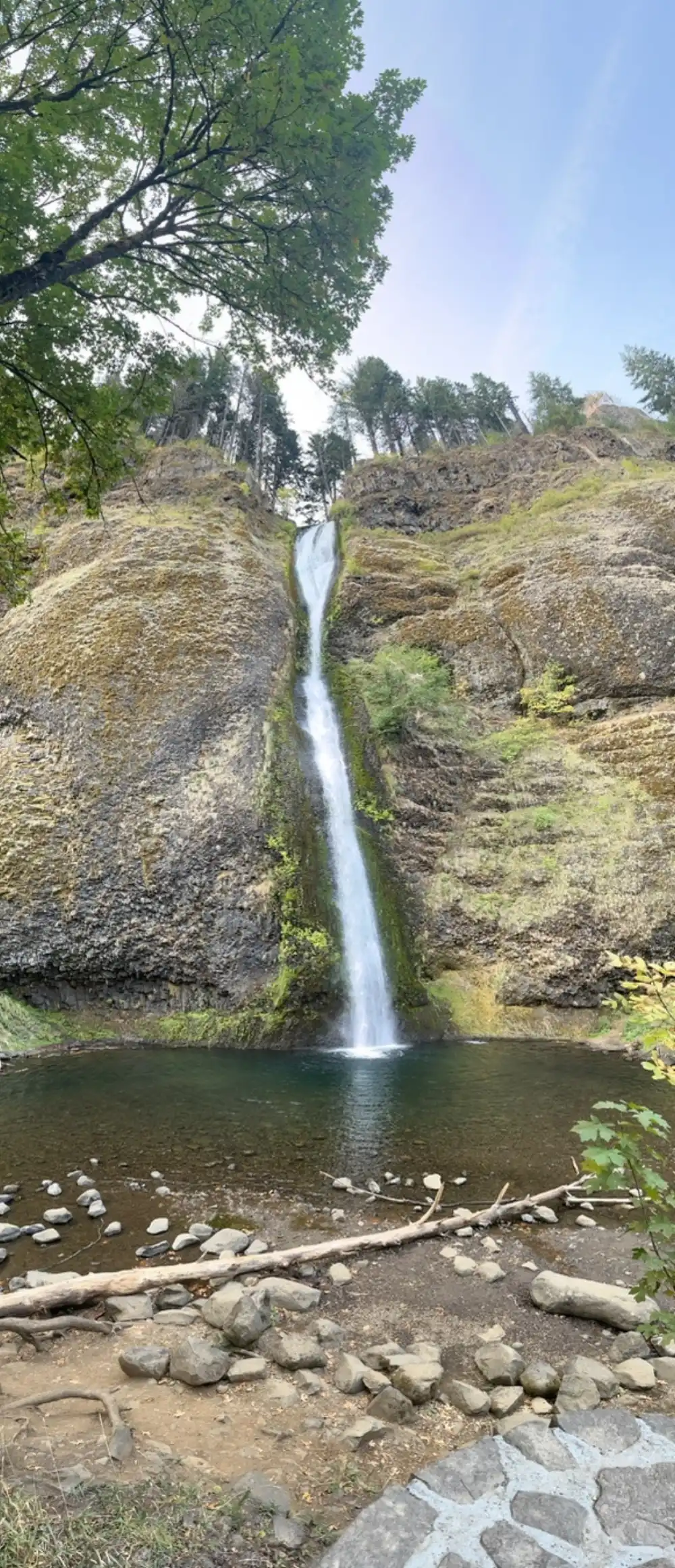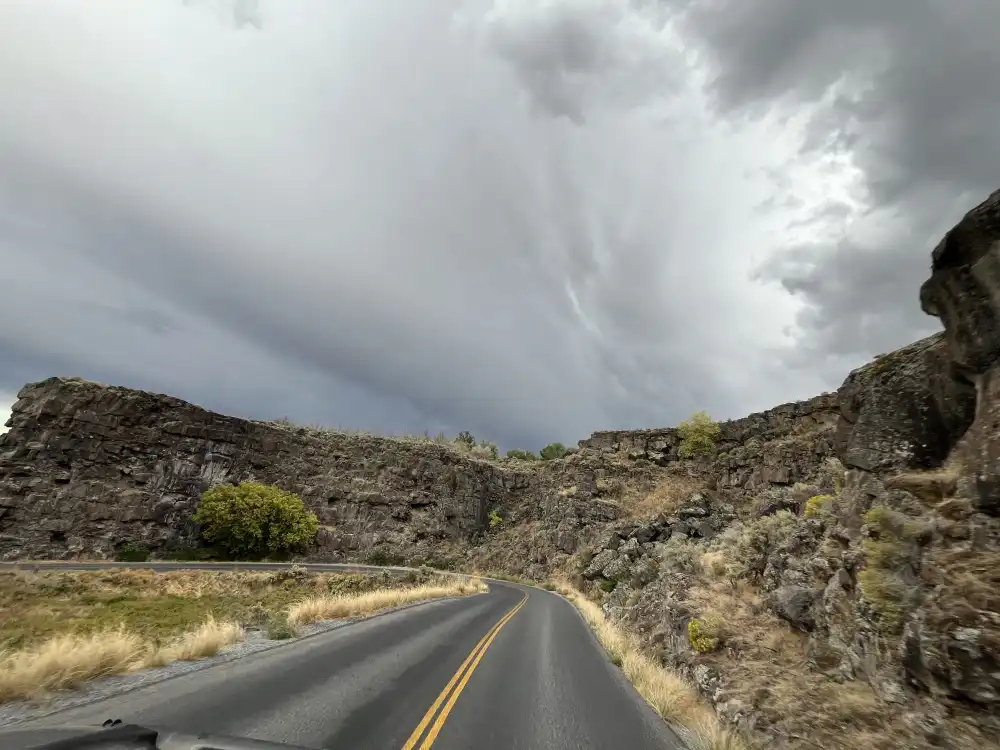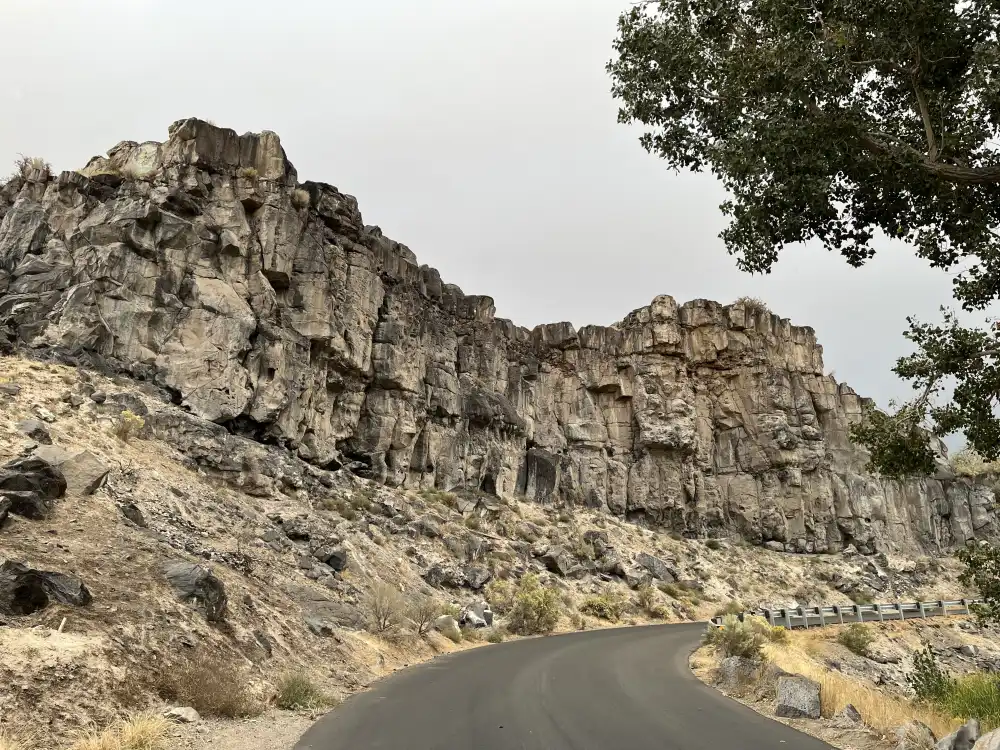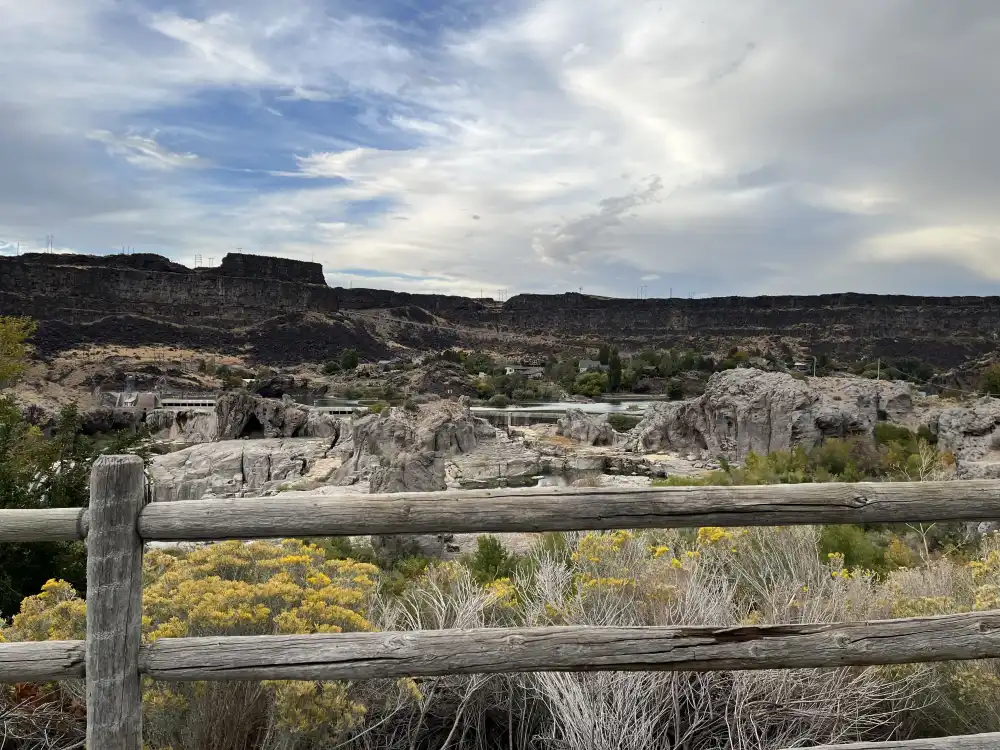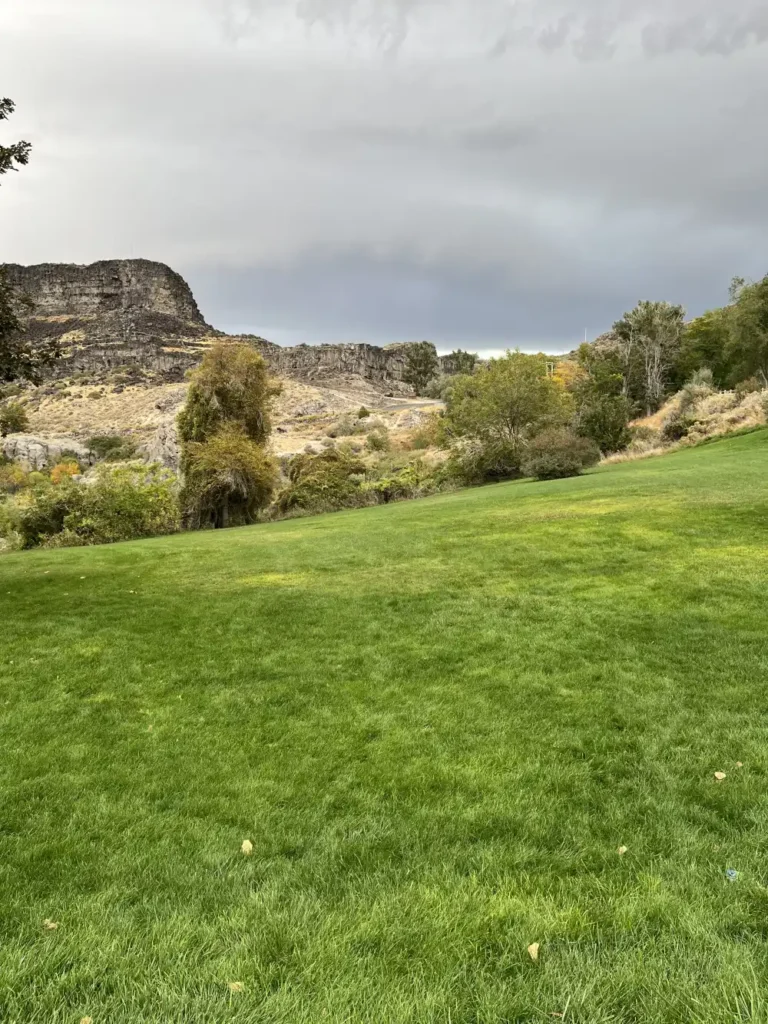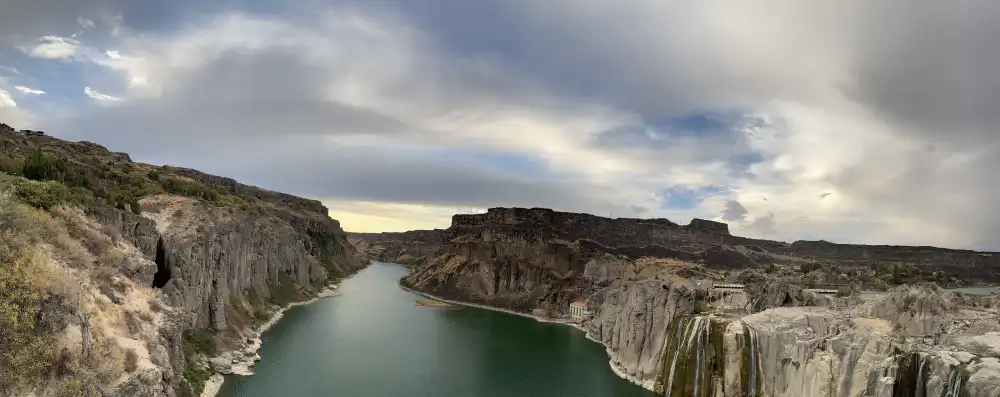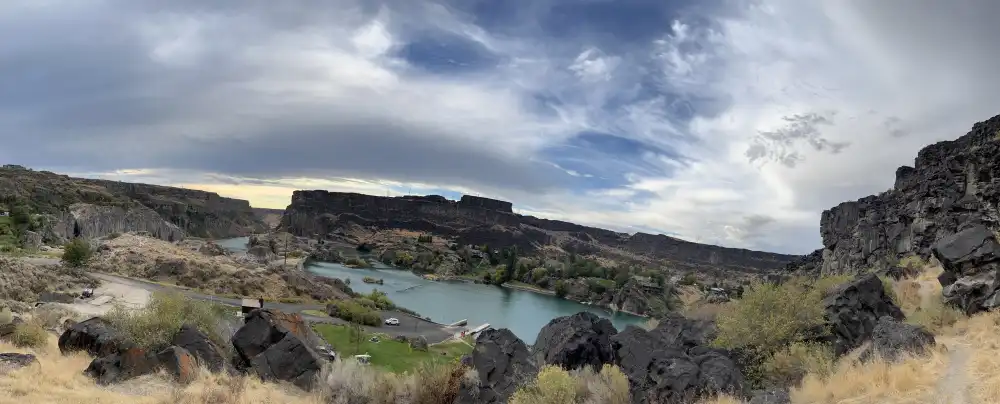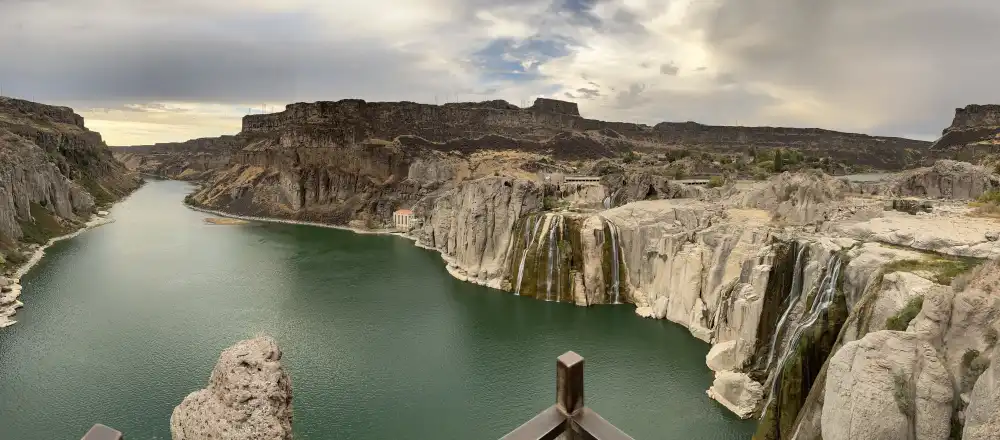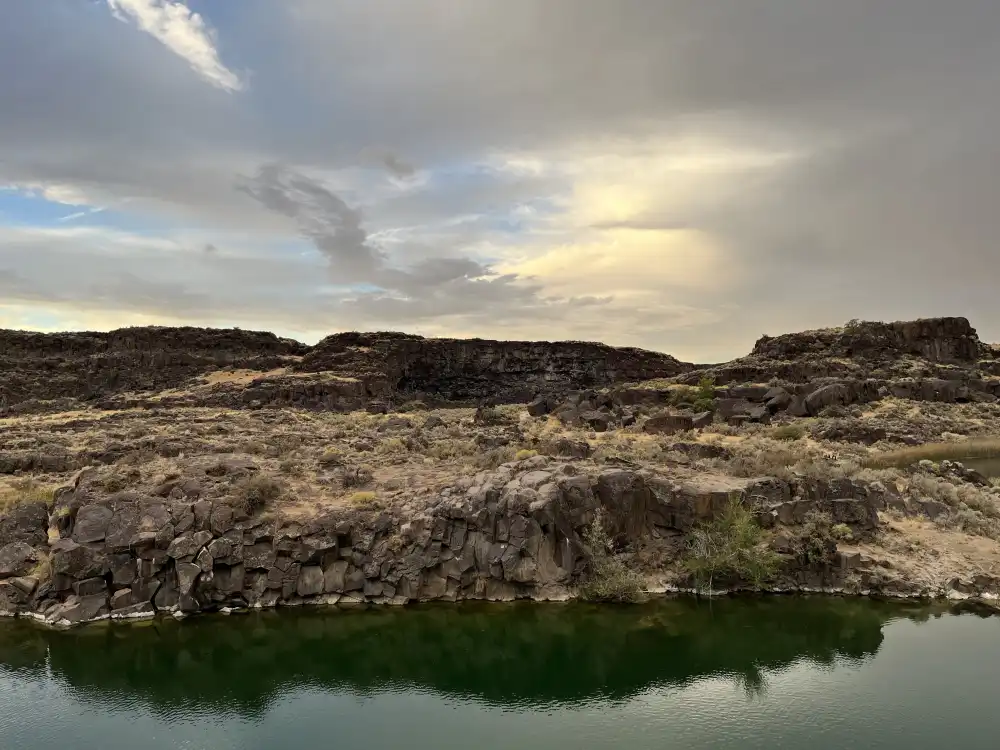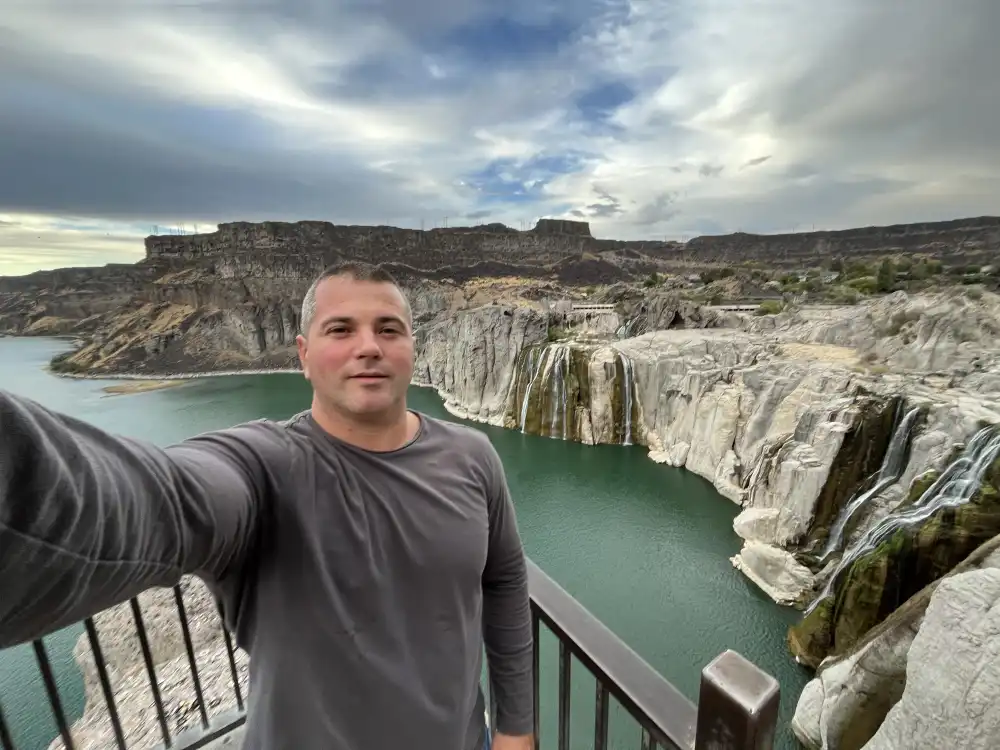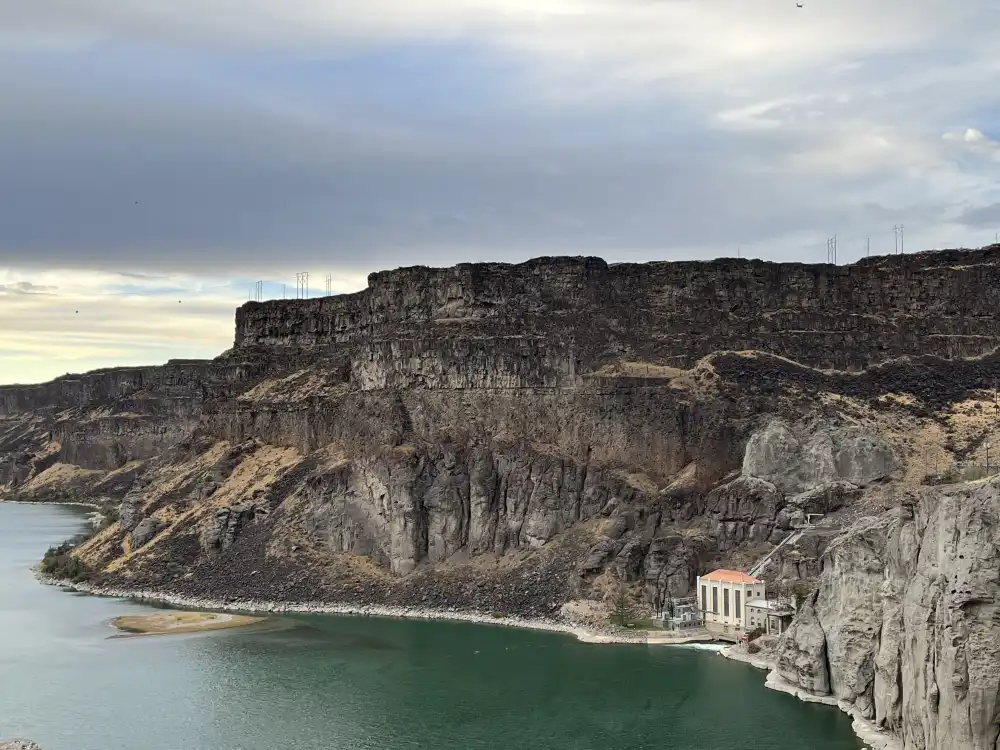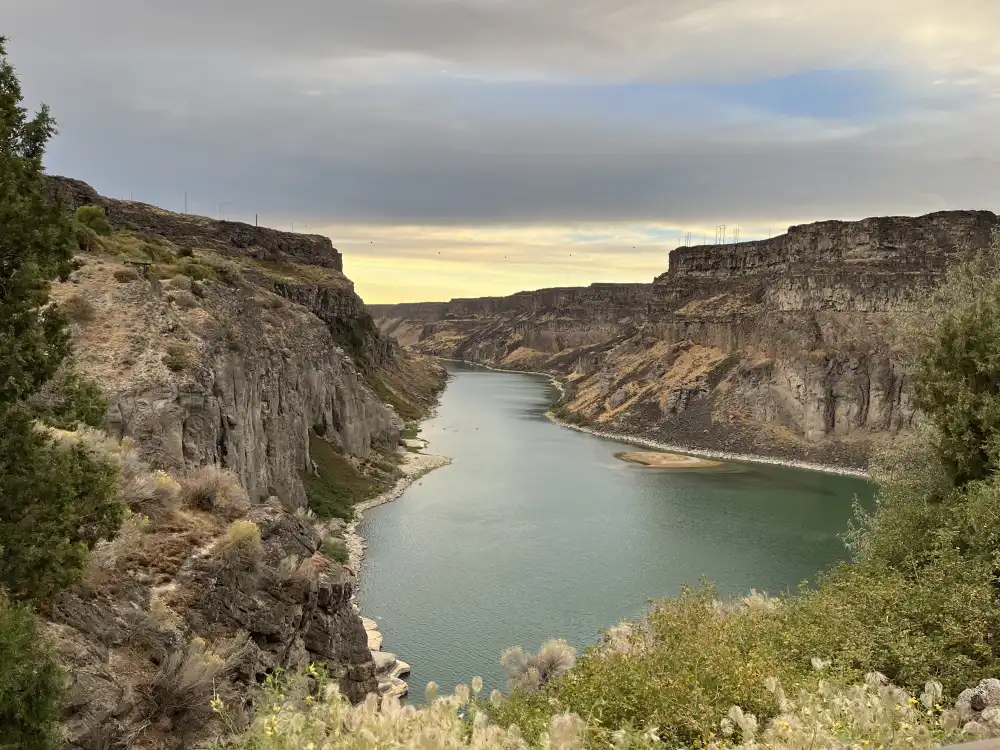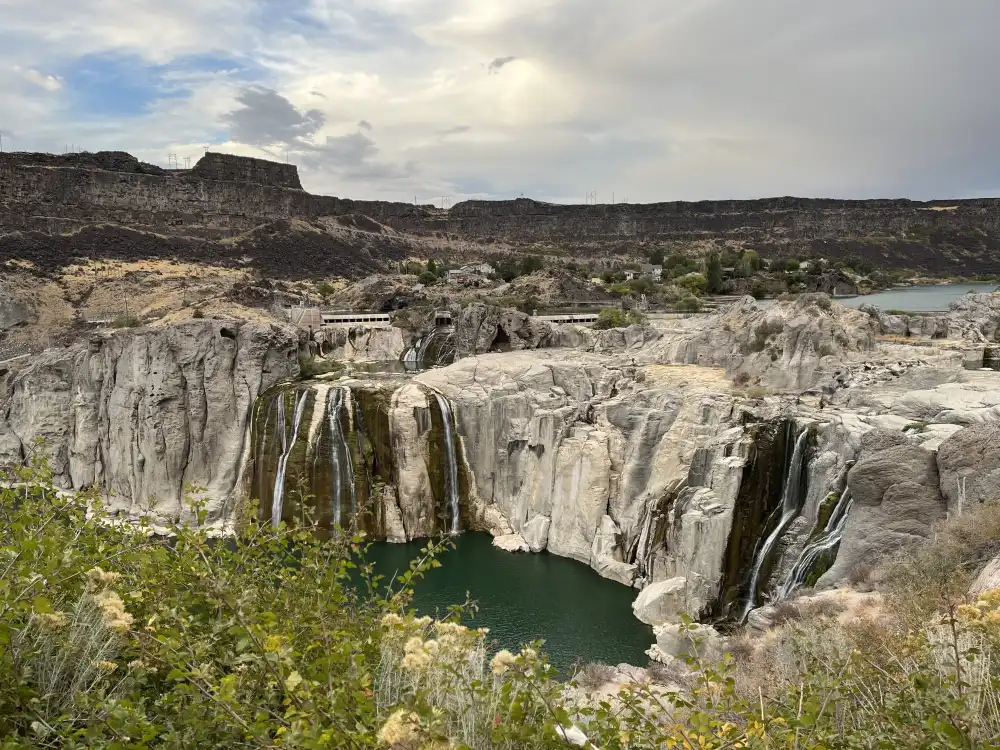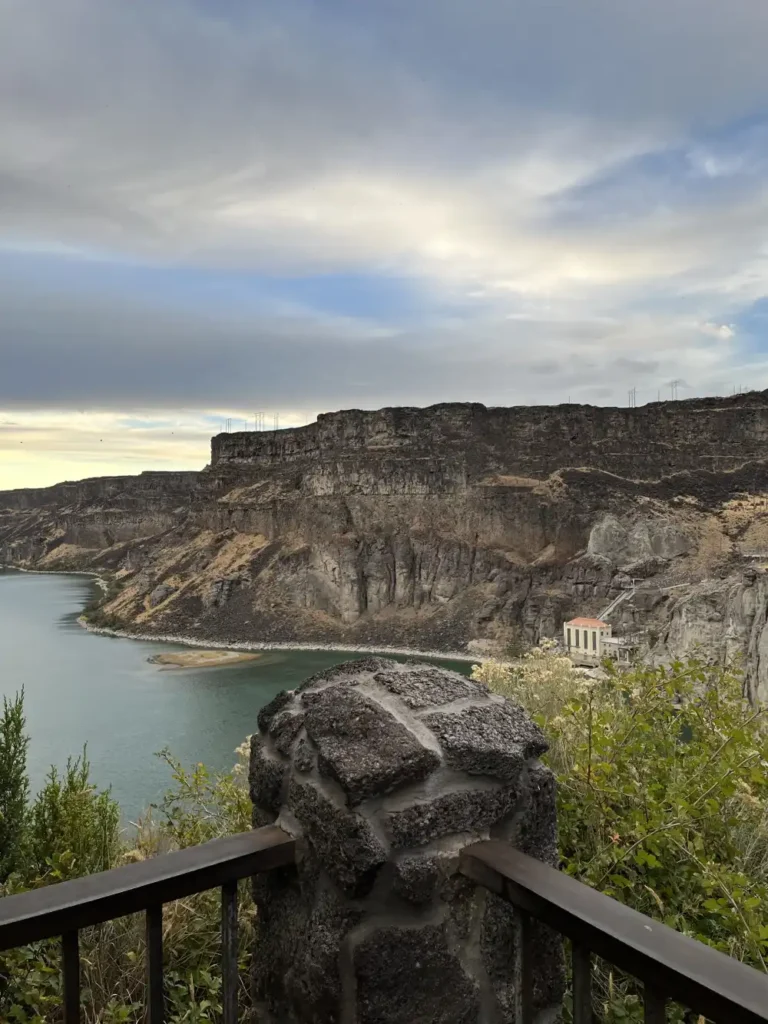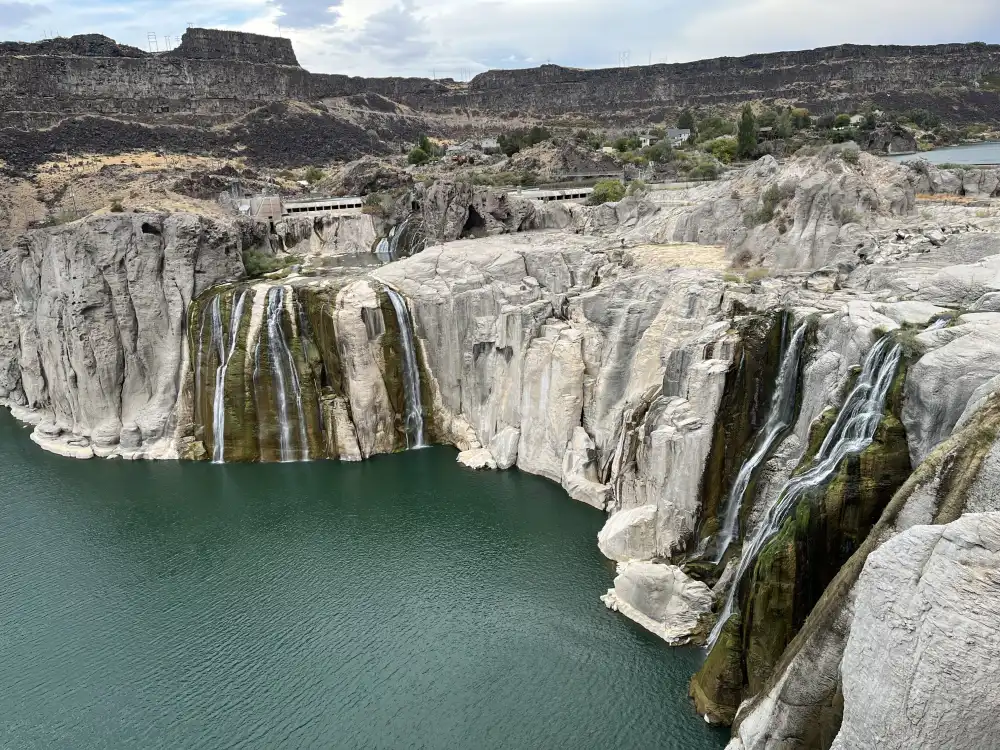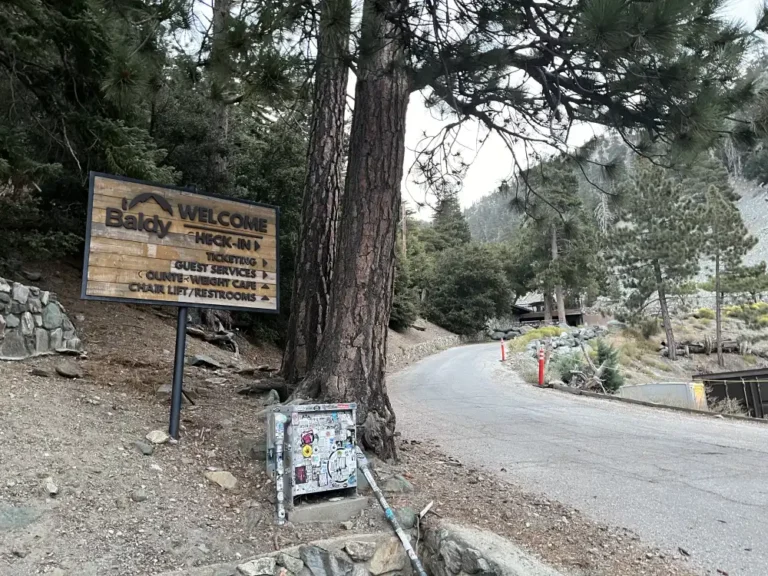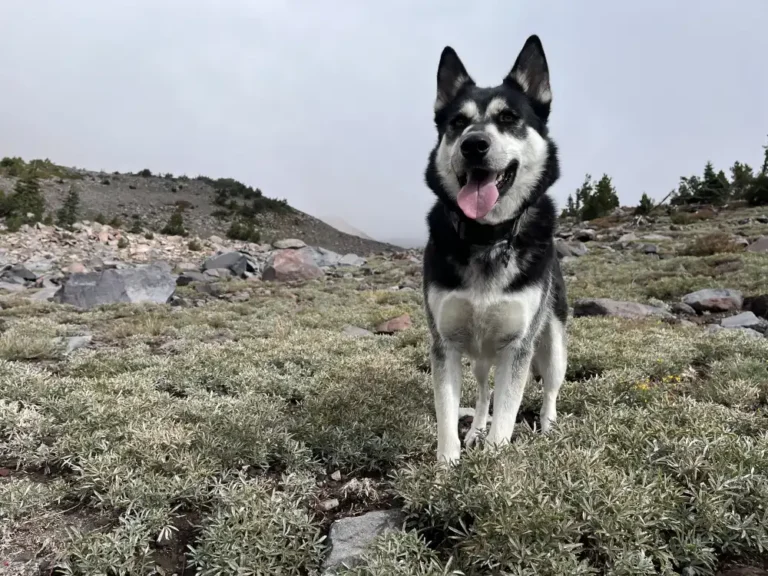Twin Falls, ID At Sunset
42.594379 , -114.397581
I started out from Portland, Oregon. I hit the road at 6 a.m. to beat the Portland traffic and started the day with a hot americano at Multnomah Falls along the Historic Highway 30. Multnomah Falls is one of those places that feels straight out of a postcard — a massive waterfall pouring down a mossy cliff, framed by evergreens and mist. Standing there, you can feel the cool spray in the air and hear the steady roar as it drops in two tiers, with that iconic stone bridge halfway up. It’s easy to see why it’s one of Oregon’s most photographed spots. For me, it’s not just a scenic stop — it’s the kind of place that makes you slow down, grab a coffee, and take in how incredible the Pacific Northwest really is. This trip couldn’t have gone any smoother.
I stopped at a few more waterfalls as the morning fog lifted, soaking in that classic Pacific Northwest scenery before heading east toward Twin Falls, Idaho.
It turned into a full day of driving, but the detours were worth it. I highly recommend getting off the interstate and taking hwy 30, anytime your in the area. I was making my way from Oregon to Las Vegas and chose Twin Falls as my overnight stop — a perfect halfway point. I checked into the Best Western, which had a newly built 24-hour pool right off the lobby–Usually I end up at a hotel and the pool is closed till morning, then checkout is an hour or two after the pool opens… I got in about an hour before sunset, dropped my gear in the room, and then set out for the evening to visit Shoshone Falls.
Entering Shoshone Falls
Driving into Shoshone Falls Park feels like entering another world. The road narrows and winds along rugged basalt cliffs, their dark layers rising dramatically on one side while the Snake River Canyon opens up on the other. The sharp turns and steep drops make it clear you’re descending into something ancient — a landscape carved by massive floods thousands of years ago.
As you continue down the road, the rock walls seem to close in, and the air cools noticeably. Then the view opens up to reveal the entry booth, perched at the edge of the canyon. From there, you catch your first glimpse of the falls in the distance, a white mist curling upward against the dark canyon walls — a preview of the power waiting just ahead.
Entry into the park was $5 per vehicle.
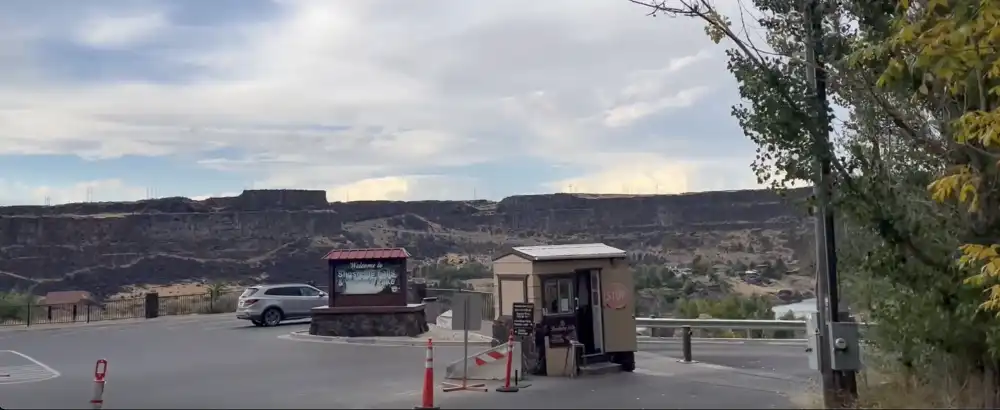
After parking, I took a few minutes to explore the area less traveled and take in the view. There was a small dirt trail that went along the left ridge from the picture above. I didn’t take it all the way back, just a minute or two of hiking and came across an interesting feature that I would have missed, had I gone and parked down at the bottom parking by the falls.
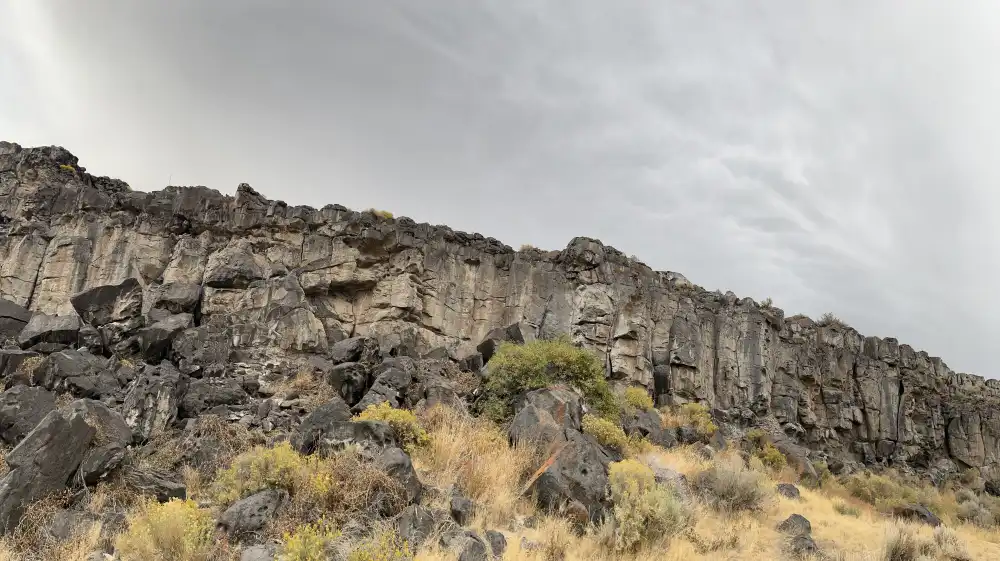
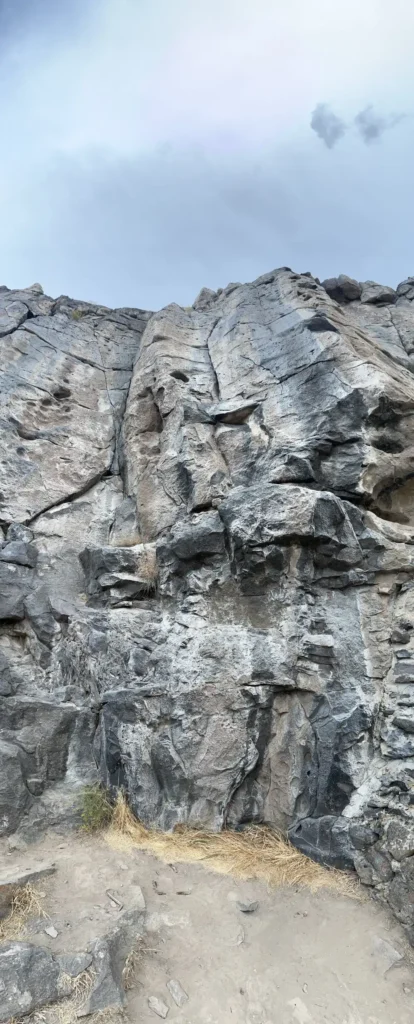
Top Roping at Shoshone Falls
The north-facing cliff beside the lot immediately caught my attention — its steep basalt walls showed clear signs of climbing activity, with natural cracks, holds, and old anchors marking routes ranging 5.8 to 5.11 from my guesstimation, perfect for top-roping.
Looking up, the cliffs towered overhead in streaks of charcoal and silver, their surfaces pitted and textured from centuries of wind and water. The vertical shot captures just how massive those formations are — sheer and rugged, a climber’s kind of challenge.
A small stone structure was carved and built into the rock. It almost looked like the start of a cave, or a lookout–possibly an ancient home or settlement–carved from the basalt itself, weathered but still solid. Around it, golden sagebrush and wild grasses framed the rough gray rock, giving the whole scene an otherworldly feel.
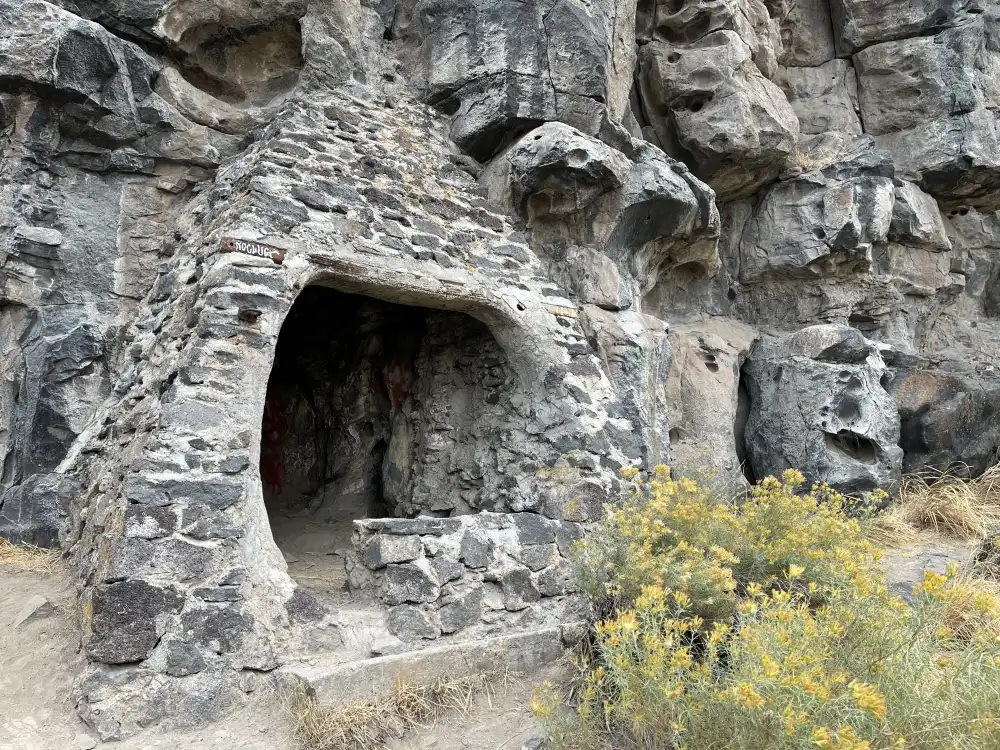
As I made my way around, the canyon opened up to a stunning overlook. From there, the Snake River wound through layers of ancient lava flows, cutting a wide, turquoise path through the valley. The final few shots show that panoramic view — a perfect mix of desert colors, canyon depth, and that calm river glinting under a moody Idaho sky.
It was one of those moments where you just stop, breathe in the stillness, and realize how wild and beautiful this part of the country really is, a personal moment set against the raw immensity of the Idaho desert. I stood on a narrow dirt trail that hugged the ridge’s edge and led down to the top of the waterfalls. I was surrounded by dry golden grasses and scattered volcanic rocks — silent reminders of the land’s ancient, fiery origins. The muted tones of the earth — tans, grays, and soft yellows — faded into the distance, meeting the cool blue-green water of the Snake River far below.
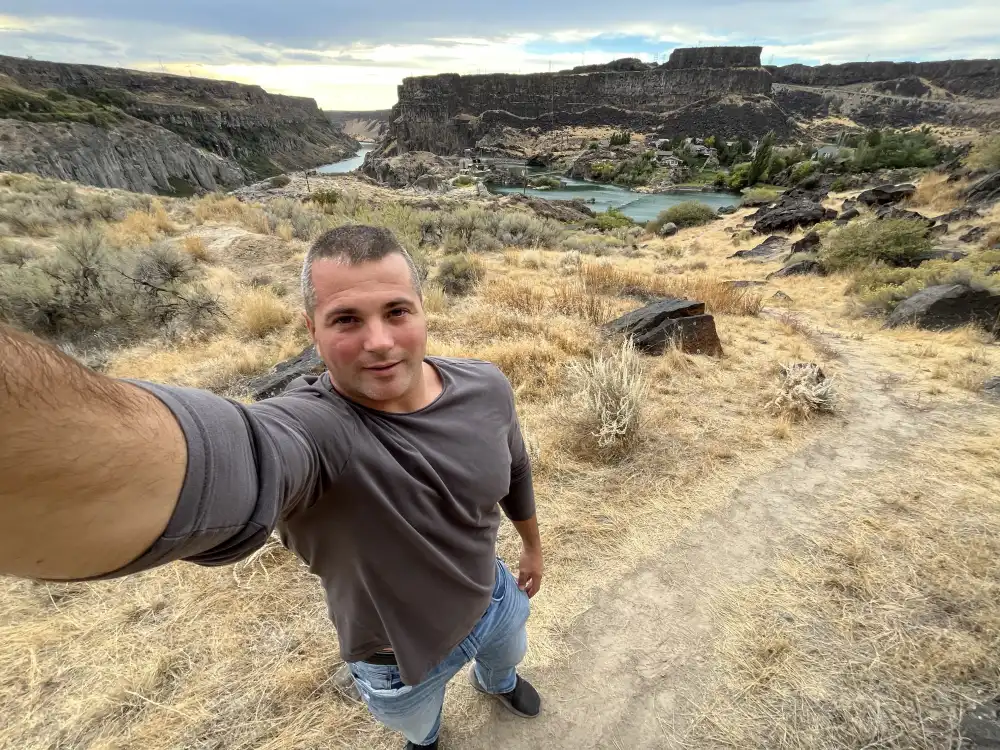
Behind me, the canyon walls rose sharply on both sides, immense layers of dark basalt forming a rugged amphitheater that seemed to hold the whole valley in stillness. Each ledge and fracture told its own story — millions of years of volcanic force and erosion etched into stone. Above, the sky carried a quiet tension — soft rolling clouds streaked with sunlight, casting that perfect late-afternoon glow that makes everything feel alive.
I raised my arm to frame the shot, half focused on the camera, half lost in the view. My stance was relaxed but grounded — part of me traveler, part of me witness. There’s a trace of a grin, the kind that comes when you realize how far you’ve come and how small you really are compared to what’s around you.
Looking back, it wasn’t just a selfie. It was a pause — a moment of stillness against the vastness, a reminder of why I love these drives. Out there, in that quiet canyon light, it felt like everything was exactly where it was meant to be.
Walking To Shoshone Falls
There were few paths to explore, not much area to cover–your in a canyon… But I managed to find some nice areas and snapped a few interesting pictures before heading down to the falls.
Shoshone Falls
Shoshone Falls was reduced to more of a trickle than a roar — a few narrow streams of water spilling over the wide cliff face, barely misting the air below. The sound was soft, almost meditative, and it gave the scene an entirely different character. Instead of raw power, there was stillness — the canyon felt hushed, the exposed basalt gleaming where the water usually thunders down. You could really see the shape of the rock formations, the ledges and grooves that the spring floods carve each year.
But in spring, it’s a completely different story. When the snowpack from the mountains melts, the Snake River swells, and Shoshone Falls transforms into one of the most powerful waterfalls in the U.S. — sometimes even outpacing Niagara in volume. The roar can be heard before you even reach the overlook, and a fine mist fills the air like rain. The falls stretch across the entire horseshoe cliff, a massive, white curtain of water crashing into the canyon below.
Standing there in fall, with the water reduced to thin ribbons, I could almost imagine that spring spectacle — the same cliffs, same basin, but alive with motion and sound. Visiting in the off-season shows you the bones of the place, but spring reminds you of its full force — a reminder of how much this desert landscape depends on rhythm, season, and flow.
Catching the Sunset
The sunset at Shoshone Falls that evening was absolutely mesmerizing — the kind that stops you mid-step. The sun dipped low over the edge of the canyon, turning the sky into a layered canvas of deep golds, soft oranges, and muted blues. Wisps of cloud caught the fading light, glowing from underneath as if the whole horizon were lit from within.

Down below, the still water of the Snake River mirrored the colors perfectly — that warm golden reflection stretching toward the foreground, broken only by a few ripples near the shore and the silhouettes of a nearby family fishing of the bank. The cliffs and basalt formations, dark and jagged, framed the light like silhouettes, making the glow even more dramatic.
The air felt calm and still, warm yet cool. I was able to briefly enjoy the kind of quiet that is deserved, at the end of a long day of travel. Watching the sun sink behind the ridge, it was easy to forget everything else — just the soft warmth of the light, the cool desert air, and the sense that the day had closed in the most peaceful way possible. It wasn’t just a sunset; it was the kind of scene that leaves you still, calm, and serene, at least for a while as the sunlight fades.
Shoshone Falls, Twin Falls, Idaho
Often called the “Niagara of the West,” Shoshone Falls is one of the most breathtaking natural attractions in southern Idaho. Located just a few miles east of Twin Falls, this massive waterfall plunges 212 feet — higher than Niagara Falls — and stretches over 900 feet wide across the Snake River Canyon. For first-time visitors, it’s an unforgettable introduction to Idaho’s high desert landscape and the raw power of the Snake River.
The Experience
Shoshone Falls sits within Shoshone Falls Park, a beautifully maintained recreation area that overlooks the canyon. From the parking area, you’ll find paved paths leading to multiple viewpoints, including a large main overlook where you can feel the mist rising from the base of the falls on windy days.
The best viewing depends on water flow, which is controlled upstream by hydroelectric dams. During spring (April to June), snowmelt from the Rockies fuels the Snake River, and the falls reach their most powerful flow. By midsummer, the volume tapers off, and by late summer or early fall, the falls can shrink to a quiet cascade — still scenic, but far more tranquil.
There are picnic areas, restrooms, and interpretive signs throughout the park, making it ideal for families or casual travelers. Photographers will appreciate the shifting colors of the canyon walls, which glow in warm reds and golds at sunset.
Getting There
From downtown Twin Falls, drive east on Falls Avenue for about 5 miles, then follow the signs for Shoshone Falls Park, down the winding canyon road. The descent offers dramatic glimpses of the Snake River Canyon before arriving at the park’s main entrance.
Address: Shoshone Falls Park, 4155 Shoshone Falls Grade, Twin Falls, ID 83301
Coordinates: 42°35′39.8″ N, 114°23′51.3″ W
What to Bring
- Water and snacks – There’s a small concession stand in season, but it’s best to bring your own.
- Camera or binoculars – Excellent for viewing the falls and spotting local birds like ospreys or hawks.
- Light jacket – The mist from the falls can cool the air even on warm days.
- Tripod – For long-exposure photos during sunrise or sunset.
- Cash or card – A small vehicle entry fee is collected at the park gate.
Best Time to Visit
Spring is the prime viewing season when water flow is at its peak and the falls thunder with energy. For fewer crowds and softer light, visit early morning or evening. Late summer and fall are calmer, ideal for hiking nearby trails or exploring the canyon’s geological formations.
Quick Facts
- Lat/Lng: 42.594379, -114.397581
- Nearest Town: Twin Falls, ID (~5 miles)
- Entry Fee: $5 per vehicle (subject to change)
- Activities: Sightseeing, photography, picnicking, hiking, climbing, seasonal light shows, and interpretive tours

